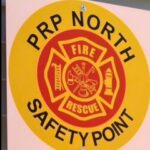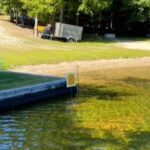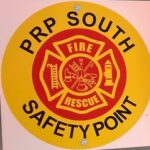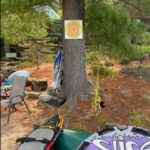Shedding Light the Right Way: A Guide to Lake-Friendly Lighting![]()
Living here you already know how magical the nights can be — the water quietly reflecting the moon, the calls of loons in the distance, and the stars shimmering overhead. But too often, this natural beauty gets drowned out by an all-too-human problem: light pollution.
While we usually think of lakes as being affected by pollutants, excessive or poorly designed lighting can be just as disruptive — for wildlife, for our neighbors, and even for our own enjoyment of the night.
Why Lake-Friendly Lighting Matters
1. Protecting Nocturnal Wildlife
Many creatures that call lakes home — from fish to frogs to insects — rely on natural light cycles for navigation, feeding, and reproduction. Bright artificial light can confuse these cycles. For example:
- Fish are attracted to or repelled by artificial lighting, altering feeding patterns.
- Insects swarm lights instead of performing their natural roles in the ecosystem, reducing food sources for bats and birds.
- Birds may become disoriented during migration, sometimes leading to fatal collisions.
2. Preserving the Night Sky
When you’re near a lake, you should be able to see the Milky Way, not just the glow from your neighbor’s dock light. Excessive light wastes energy and robs everyone of stargazing opportunities.
3. Being a Good Neighbor
Just as you wouldn’t blast loud music at midnight, blasting bright light across the water can be equally disruptive.
Adopt the “Four S’s” Approach to Lighting
1. Shield It
Choose fully shielded fixtures that direct light downward, not outward or upward. This reduces glare on the water and keeps light where it’s needed — on the ground.
2. Soften It
Go for warm-colored LEDs (2700K or less). Cooler, blue-toned light is more disruptive to wildlife and scatters more in the atmosphere.
3. Set It (and Forget It)
Use timers, dimmers, and motion sensors. Lights should be on only when they’re needed — dusk to dawn lighting is rarely necessary.
4. Size It Right
More light doesn’t mean more safety. A small, well-placed light can illuminate your path or dock without turning the shoreline into a floodlit parking lot.
Lake-Friendly Lighting Ideas
Low Bollard Lights for pathways — shielded, low to the ground, and soft.
Amber Dock Lights — these have minimal impact on insects and fish.
Motion-Activated Porch Lights — they turn on only when you’re there.
Solar-Powered Fixtures — energy-efficient and often dimmer by design.
The Bigger Picture: Lighting as Stewardship
Every time we choose better lighting, we’re not just saving on our electricity bill — we’re helping preserve the delicate balance of our lake ecosystem. Less light means fewer disoriented insects, safer migratory routes for birds, and a healthier environment for fish and amphibians.
And there’s a bonus: stepping outside to see the stars reflected in a calm lake is good for the soul.
North and South Safety Points
The North and South Safety Points are locations set up on the lake in order to get emergency services to you faster if needed. When calling 911 for an emergency on the water, emergency personnel will know where you are if you state which Safety Points you’re at or will be at to meet them.
The PRP Association worked with local emergency officials to set up these Safety Points in order to shorten the response time to get life-saving services to a patient during an emergency. Please familiarize yourself with these important emergency locations next time you’re out on the lake.
NH Dock Structure Laws
NHDES uses the criteria in NH RSA 482-A and its associated Administrative Rules to regulate docks. Even temporary seasonal docks require a permit, although th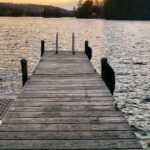 ey may qualify for a streamlined process if certain criteria are met.
ey may qualify for a streamlined process if certain criteria are met.
Seasonal dock structures on freshwater waterbodies must be at least 20 feet from an abutting property line, and removed from the lakebed during the non-boating season (a minimum of 5 months). The number and size of docks permitted is dependent on waterbody size and shoreline frontage.
The size and number of boat slips are also regulated by state law. Location of a boat slip is also restricted.
Voluntary dock registration was enacted in 2023 making it easier to repair or replace an existing freshwater dock structure. This optional program allows docking structures to become compliant with state law in cases where a structure lacks documentation to pove it was legally constructed. Non-compliant dock structures could complicate property sales as well as enforcement response options if a complaint is filed against a structure. Registering a seasonal dock only requires proof that the docking structure and configuration existed before January 1, 2000.
Only “grandfathered” docks or repair/replacement of existing legal structures can avoid permitting requirements under NH law. A docking structure is considered legal if it was in place before September 4, 1978.
Swim rafts must display the owners name and lake address plainly on the outside of the raft, and display 12 square inches of reflective material at least halfway up on all sides of the raft.
The state can enforce permitting requirements to include failure to obtain or comply with NH law or a permit. See the NHDES Environmental Fact Sheet WB-19 for more information.
 Swollen Bladderwort
Swollen Bladderwort
May and November are the two months that Swollen Bladderwort (SB) can display its bright yellow flower. If you spot a yellow flower that looks similar to the one pictured, notify Cindy Pfeiffer of the location.
SB is free-floating, and its root system is not attached to the lakebed. The distinctive wagon wheel spoke-like floats keep the plant suspended in the water. The spokes of the float are branched and have bladders in and among the branches. Below its floating spoke, the root system of filamentous branches looks like a dense hair-like mat just under the surface. Note the size of the spiral base that distinguishes it from other smaller native varieties of blad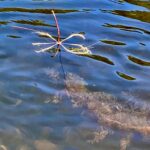 derwort in PRP. The specimen pictured in the water has lost it yellow flower, but the spiral base remains to support the stalk and the submerged root system is visible. In fall, winter buds form and settle to the lakebed to help it survive and spread.
derwort in PRP. The specimen pictured in the water has lost it yellow flower, but the spiral base remains to support the stalk and the submerged root system is visible. In fall, winter buds form and settle to the lakebed to help it survive and spread.
Experts advise that our annual 8′ drawdown will likely help us manage this invasive plant, but we need your help to find the locations where it survives the winter so that we can hand-harvest it from the lake. If you see this plant at your shoreline, please remove the mass onto the shore and move it away from the lake to let it die off. The plant can spread by plant fragments and seeds so scooping out the entire growth is important.
Please avoid operating watercraft through SB to minimize the chance of breaking the plant mass apart and causing it to spread further. It will move around the lake with the wind and current.
Adding Shoreline Sand
Are you aware of the negative impact adding sand to your shoreline has on the pond? Some of the ways that sand degrades the overall health of the pond include:
-introducing new elements to the pond (added sand has a different composition than the natural soil and sand already in the lake);
-sand contains chemicals such as iron or phosphorus that contribute to declining water quality;
– sand moves through the water and prematurely ages the pond by gradually making it more shallow as well as reducing the clarity of the water
Adding sand impacts the health of the entire ecosystem, affecting the natural life in the pond and increasing the chance of harmful algae blooms. Because of this, NH has laws regarding the addition of sand to support the health of our pond. These laws can be found under the 303.4 section of the NH Code of Administrative Rules. In summary, when adding sand to an existing beach, it cannot be added to or adjacent to a prime wetland, cannot be placed below the normal high-water line, and cannot exceed 10 cubic yards of sand. In addition, a beach cannot be replenished more than once in a six-year period.
Please, abide by these laws to help ensure Pine River Pond remains a beautiful and healthy place.


